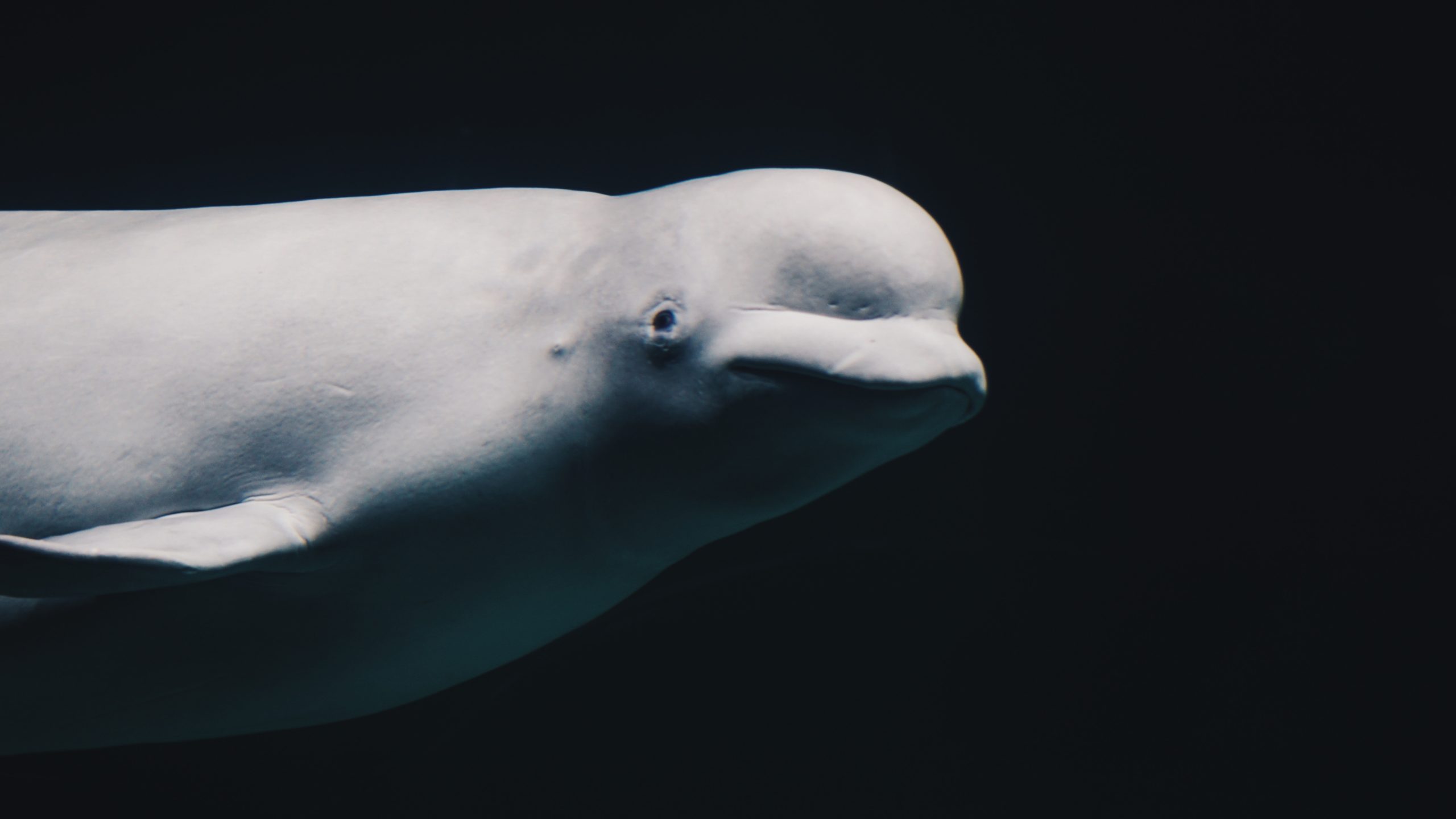
Sea Wonder: Beluga Whale
Despite its name, the beluga whale (Delphinapterus leucas) is actually a member of the dolphin (toothed whale) family. They are known for their vocal nature, which earned them the nickname of the canaries of the sea. Belugas are great communicators using a diverse language of clicks, chirps, whistles, and other sounds to socialize. They can also mimic a variety of other sounds.
Description
Born gray, they turn paper white when they reach adulthood. They have bulbous melons (foreheads), a blowhole atop their heads, two pectoral fins, and two tail flukes. Unlike other species of dolphins, belugas do not have dorsal fins. They can reach average sizes of about 14 feet and 3,000 pounds with observed differences between males and females in that males are usually larger. As much as 40 percent of the beluga’s body is fat, which keeps them warm and provide them with energy stores.
Diet & Habitat
Beluga whales live in icy, arctic waters and throughout the northern hemisphere that can be as cold as 32 degrees Fahrenheit or 0 degrees Celsius! They migrate as the density of ice sheets change throughout the year, moving farther south during the fall and winter months and farther north for the spring and summer months. They aren’t commonly seen in the United States but have rarely been observed off the coast of New England and California.
Belugas are carnivores like all other species of dolphin but aren’t picky as scientists have observed them eating many species of fish, crustaceans, squid, worms, and snails. Adults can eat as much as 60 pounds of food per day, which they catch in their cone-shaped teeth and swallow whole. Polar bears and orcas are natural predators of belugas, and some indigenous communities in the arctic rely on belguas as a food source in the winter months.
Life History

Photo Credit: Ellen Cuylaerts/ Coral Reef Image Bank
Belugas mate when waters are warmer, beginning in late-February and continuing through March and April and gather in groups of as many as several hundred individuals for mating. Calves are born after about 15 months of gestation and stay with their mothers for up to three years, nursing for several months before beginning to play with solid foods and learning hunting strategies. Females mature between four and seven years old while males reach adulthood later between seven and nine years old. Experts are unsure how long the maximum beluga whale lifespan is, but the oldest animal in a zoological setting was over 40 years old. In terms of social groups, adult males tend to travel together in small groups while adult females and their calves group together in larger groups, and finally, juveniles of both sexes that have left their maternal pods will travel together before creating smaller groups. Like other dolphin species, belugas live in fission-fusion social groups, which means they are constantly forming new social groups and sometimes travel independently.
